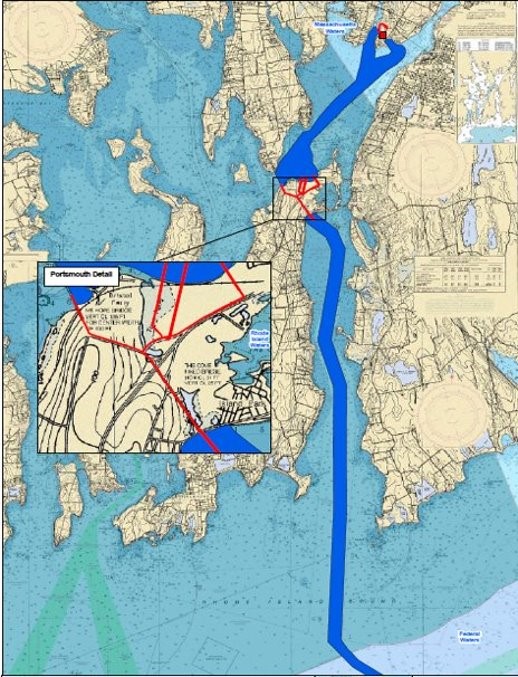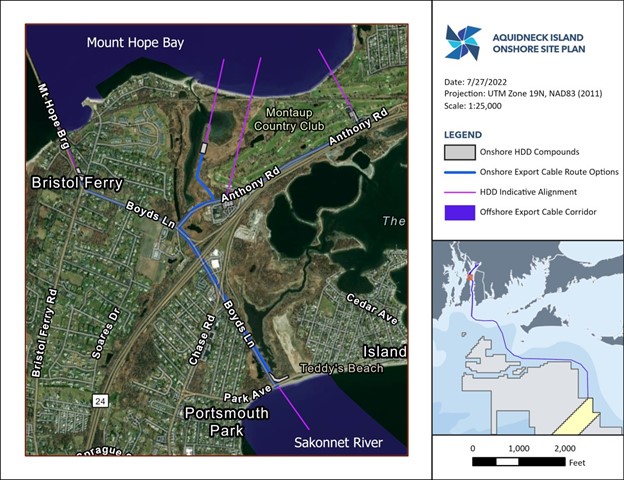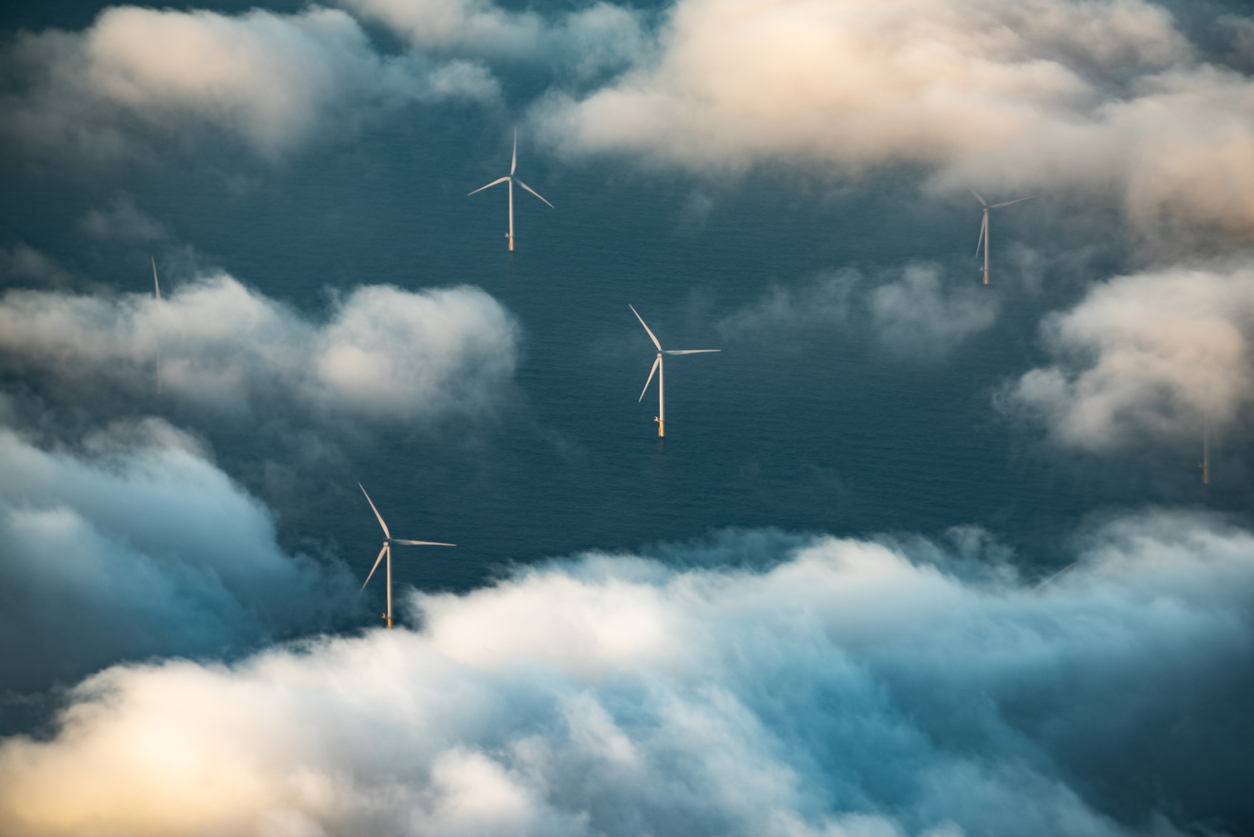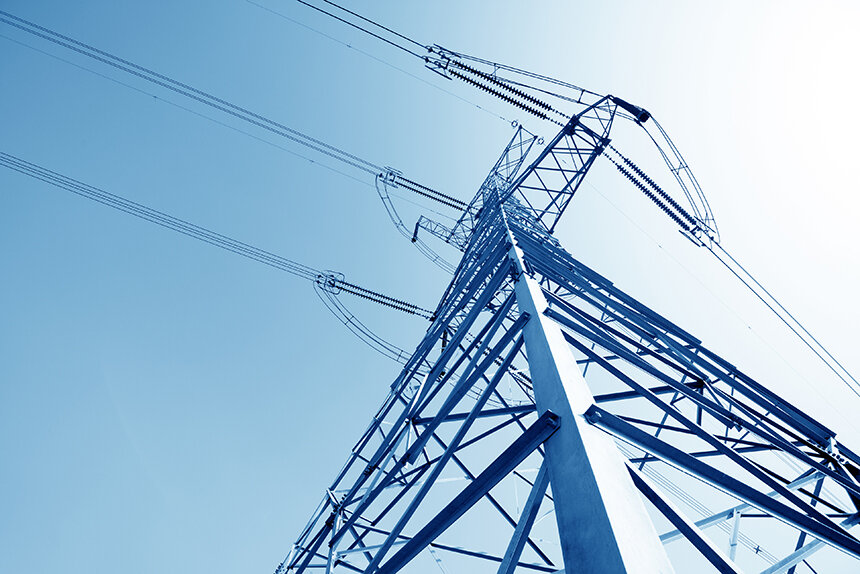Mayflower Wind Claims Effects of Buried Cable Under Sakonnet River Would be Minimal
August 17, 2022
PORTSMOUTH, R.I. — An offshore wind developer assured Aquidneck Island residents Tuesday night they would experience minimal disruptions from a proposal to bury an export cable along Boyds Lane into Mount Hope Bay.
The project is part of a proposed wind facility by Mayflower Wind LLC in a leased area roughly 30 miles south of Martha’s Vineyard. According to the company’s proposal, the offshore development would contain 149 positions for wind turbines and substations, and generate 2,400 megawatts of renewable energy — enough to power 800,000 New England homes.
But there’s a twist: Mayflower Wind is asking to bury one of two export cables under the Sakonnet River riverbed, and residents expressed concern during a well-attended public hearing held Aug. 16 online over possible impacts to fish habitat, boat and car traffic, and existing recreational uses of the river.
Transmission development manager Lawrence Mott assured residents any impacts would be minimal.
“The various environmental organisms affected will be able to regenerate and go back to their normal state,” said Mott.
The cable would travel 90 miles in federal waters before turning north and traveling another 16 miles in the Sakonnet River. Mayflower Wind officials indicated the cable, which is 13 inches in diameter, would be buried 6 feet deep, and have no impact on boating or fishing.
The cable would then turn northwest into Portsmouth underground, coming onshore somewhere around Boyds Lane. The cable would then travel 2 miles underground, at a depth between 6 and 7 feet, following Boyds Lane before turning sharply northeast and exiting at one of three proposed sites.

“It avoids residential areas, and it has the ability to minimize congestion around the Mount Hope Bridge area and avoids any of the difficulties around the end grid path,” Mott said. Once in Mount Hope Bay, the cable will travel northeast toward a new substation in Brayton Point in Somerset, Mass., former home of one of the dirtiest coal plants in the country. From that substation, the energy will power homes around the region, including in Rhode Island.
Mayflower Wind officials emphasized the net positives of the project. The company estimates the proposed wind facility will create 14,000 new jobs between construction and the estimated 30 years the project would be in operation. The operations and maintenance port in Fall River would create 400 full-time jobs, and Mayflower Wind pledged to hire 75% of all jobs locally.
Community liaison officer Dugan Becker indicated that Portsmouth would receive compensation for hosting the cable, either in the form of taxes or payment in lieu of taxes. “In terms of direct benefit, there will be direct revenue for the town,” Becker said. “The form that revenue takes is still being ironed out.”
The project comes at a time when Rhode Island is hungry for renewable energy. Gov. Dan McKee signed the 100% Renewable Energy Standard into law in June, mandating all electricity sold in Rhode Island be offset by renewable energy by 2033, one of the most aggressive standards in the country. Currently, the state only has offsets for 19% of electricity sales this year, the minimum standard under the old law.
And climate change is hitting hard. The state has warmed an average of 3 degrees Fahrenheit since 1900, and residents felt it this summer over a number of consecutive high-temperature days. Longterm records from Newport’s tide gauge show that sea levels around Aquidneck Island have risen 10 inches in the past century, with levels expected to rise another 9 feet by 2,100.

The nine lease areas off the coast of New England have an estimated energy potential of 13,000 megawatts (MW), which according to Mayflower Wind officials is enough to power “every single home in New England, as well as a substantial portion of our commercial and industrial energy demands.”
Currently, only a fraction of the total potential has been approved for leases. Including Mayflower Wind, Massachusetts has contracted only 3,200 MW of offshore wind. Connecticut has contracted out 1,108 MW.
Earlier this year the General Assembly passed a law requiring the electric distribution company to request proposals for 600 MW of new offshore wind by the end of this month, raising Rhode Island’s total procurement from 400 to 1,000 MW.
The Mayflower Wind project is actually a 50-50 joint venture between the renewable energy arm of Royal Dutch Shell and renewable energy developer Ocean Winds, which itself is a joint venture between EDP Renewables — a subsidiary of Portuguese utility company Energias de Portugal — and French multinational Engie.
Mayflower Wind officials told residents Tuesday they would need to secure 60 different permits across 30 government agencies before construction on any part of its proposal could begin. The company’s current timeline estimates construction of the cable underneath Portsmouth could begin as soon as late 2024 or early 2025. The wind facility itself is slated to become operational by 2028.
The company has a preliminary hearing scheduled with the state’s Energy Facility Siting Board for Thursday morning, Aug. 18.




What are the expected emissions
This is bullshit! This is a company that represents Massachusetts and they will benefit from the energy and yet they want to desimate RI for profit after Falmouth rejected the closest point!
Does it avoid residential areas? What about the residential homes at Boyds Lane & Chase Road ? The amount of power buried under the streets of Portsmouth is three times the output of the Pilgrim Nuclear Power Plant in Plymouth Massachusetts (680 megawatts).
The Falmouth, Massachusetts residents rejected this proposal on June 8, 2022.
Diana, Massachusetts is on the same power grid that serves RI. Even though the company buying the power is in MA, the power will go to us all, even as did the power from Brayton Point.
(BTW, what is “desimate”?)
This is untested technology. What if Mr. Mott is wrong! Portsmouth residents and others living on Aquidneck Island suffer the consequences and fight this out in court!
No thanks, no amount of compensation is worth his type of environmental risk.
If all due diligence is taken to ensure minimal disruption to the environment I believe that this would be preferable to stringing transmission lines on towers in the water and on land.
If a clerk of the works with a background of intense training in environmental preservation and a recognized environmental advocate is appointed to oversee any and all construction. He or she must be given the authority to stop work if proper environmental safeguards are not adhered to.